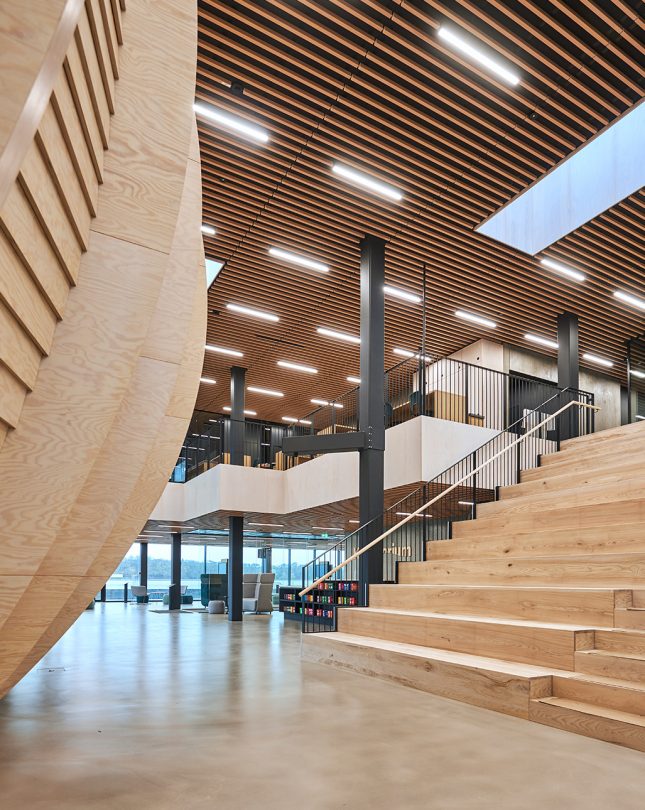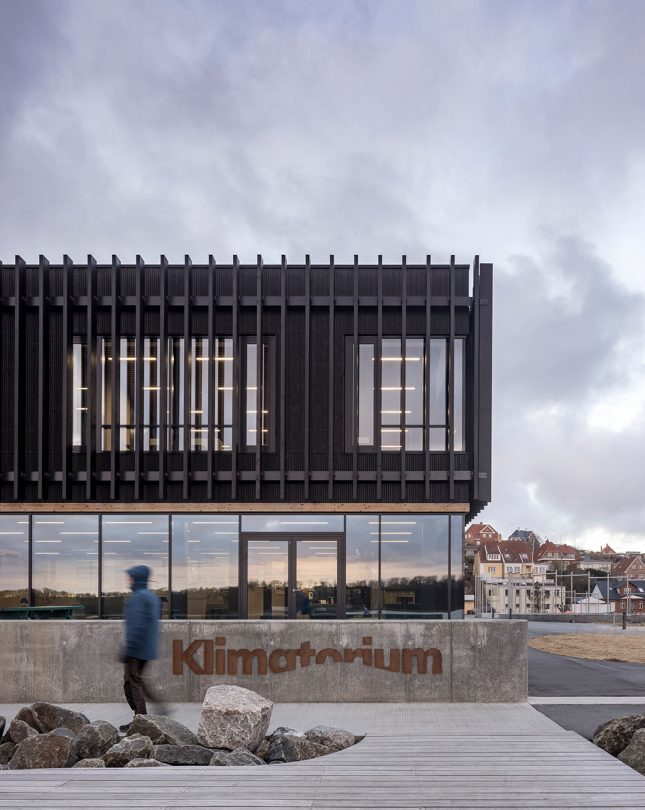Our latest news and views English
Underpinned by our Scandinavian design heritage, we bring you regular stories about architecture and interiors, exploring natural materials, acoustics, and the creation of safe and harmonious environments.
Denmark has long been a centre for sustainable advancements. A settlement on the country’s west coast was thus a fitting location for the new Klimatorium. Jan Ammundsen of 3XN Architects talks through its benefits to the town’s people as well as its impact on climate change.

The Klimatorium is a 2020 project by 3XN Architects, a practice which has been challenging conventions, while advancing a Scandinavian tradition of clear functionality and simple beauty for over three decades. This international climate centre scheme is located on the waterfront in Lemvig, north west Denmark. The project is intended to celebrate the area’s seafaring history, as well as looking to a more sustainable future.
“It’s kind of converting this industrial area into something that now is opening up,” begins Jan Ammundsen, 3XN Senior Partner. Not only does the building support the country’s role in pioneering environmental solutions across the globe, but its landscaping, overseen by Danish practice SLA, includes flood defences for the area.
The architecture gives a strong nod to Lemvig’s seafaring and boat building heritage. Described by its creators as a ‘wavy organic pocket in light wood’ the structure features a wave-like form carved into the exterior, which has a distinctive set of steps for people to sit on. The design provides access to nature and the water, opening up the harbour. Ammundsen says, “Making this building public was a key thing. This seating area creates an iconic moment so in this way the building is offering something for everyone. It is mainly offices, but the building also has an exhibition space as well as a small cafe.” The building is not just a workplace but offers a wealth of social space too.
“What they’re doing inside the building is coming up with solutions for climate change,” Ammundsen continues. The work completed there will have a particular focus on storm surges and water research. As well as being a symbol for addressing the climate emergency, 3XN have considered the structure’s own sustainability credentials. “Sustainability can often be hard to boil down to a few elements but here we have a lot of local materials that are also easy to maintain.”


“There is a lot of wood, giving the space warmth,” he says. On the ground floor, there are glass facades and doors to help create a welcoming feel. “The lower ground is transparent, whereas the first floor is heavier, if you like. There’s this connection to the waterfront and a fantastic view towards the water and that has been key for the design. The building is a straightforward box. But by creating this exterior seating, we have this sheltered, protected social area.” The project’s not only about visual communication but also getting across the idea of what’s happening here in terms of climate change research and getting the message across to the public.
The climate emergency and the environmental consequences such as flooding are a matter of grave concern around the world. Ammundsen believes the Klimatorium contributes to solving these challenges by facilitating collaboration: “While rising sea levels are part of our reality, the Klimatorium, as well as the research that will be carried out within it, demonstrates that together we can find solutions and continue living in close proximity to the sea.”
The seating element and internal public spaces, as well as the transparency of the ground floor, give it a real feeling of openness; emphasising the importance of bringing people together to tackle climate change issues. He adds finally, “It is my hope that the city of Lemvig and the people who live there will take away new experiences from visiting the Klimatorium.”